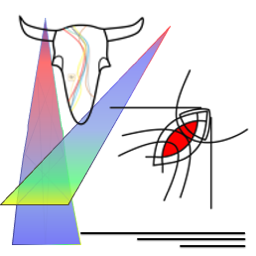
China has at last adopted rules that define “domestic product” for purposes of government procurement and provide a 20% price evaluation advantage for qualifying domestic products. The new rules also include requirements for components to achieve a specific localization ratio. This measure fills a gap in implementation of China’s 2003 Government Procurement Law, which requires government entities to purchase domestic goods. As the US Trade Representative has pointed out: “Without clear rules on what constitutes a ‘domestic product,’ procurement officials often prefer to err on the side of caution and purchase products from domestic Chinese companies.” This post examines China’s new domestic product standards.
On September 30, 2025, China’s State Council issued a Notice on Implementing Domestic Product Standards and Related Policies in Government Procurement. The standards and policies will become effective on January 1, 2026.
The final standards are very similar to a draft issued in December 2024. Their adoption concludes a process that began 15 years ago when China solicited public comments on a proposed definition of domestic products.
Domestic Product Standards: The newly adopted standards require a product to meet three cumulative conditions to qualify as a domestic product: substantial transformation within China, local cost component ratio; and requirements for key components and processing.
(1) Substantial Transformation within China: The product must be produced within China’s customs territory and undergo a process that results in a new product that is completely different from its raw materials and components and has a new name, characteristics, and use. The standards exclude certain activities as constituting the necessary transformation such as protective operations during transportation or storage, packaging, and labeling.
(2) Cost of Components Produced in China: The second condition is that the cost of components produced in China must account for a specified proportion of the product’s total cost. The Ministry of Finance (MOF) and other regulatory authorities will determine, by product, the specific ratio of the cost of components produced in China. Until they do so, a product will be considered domestic if it meets the substantial transformation requirement.
(3) Key Components and Key Processes: Certain categories of products must meet additional requirements, as determined by MOF and other authorities.
MOF and other regulators will develop product-specific standards for the cost of components and the key components and processes within five years of implementation of the domestic product standards. An additional three-to-five-year transition period will follow to allow for gradual compliance. In developing the future standards, China has committed to broad consultation with domestic and foreign-invested enterprises, industry associations, and chambers of commerce.
The domestic product standards apply to the direct procurement of goods and goods embedded within service contracts. The goods subject to the standards are those listed in the “Catalogue for Government Procurement Items with certain exclusions.
Under the new standards, procuring entities must require suppliers to provide a “Declaration Letter of Conformity with Domestic Product Standards” and publicly disclose the “Declaration Letter” of the successful bidder along with the bid results. The notice includes cost accounting rules for components produced in China.
A more extensive analysis of the new standards can be found here.
20% Price Evaluation Advantage: The new measure supports domestic products with a price evaluation advantage mechanism that applies when domestic and non-domestic products compete in the same government procurement. Goods that qualify as domestic products will be given a 20% price advantage in the evaluation of the bids. That means that the domestic product’s quoted price will be reduced by 20% in the evaluation, giving it an advantage over its competitor offering a non-domestic product. When a supplier offers multiple products in a procurement, it may receive the 20% price deduction across all its offered products, provided that domestic products account for more than 80% of the total cost of its products.
The new policy guarantees equal treatment for all business entities, including foreign-invested enterprises, private enterprises, and state-owned enterprises. This means that products of foreign firms are entitled to the 20% price evaluation advantage if they qualify as domestic products.
International Agreements: To date, China has not entered any international agreement that commits it to open its procurement market to foreign suppliers and to not discriminate against foreign goods and suppliers. However, the new measure provides that if China concludes or joins an international treaty or agreement, the domestic product standards and policies would not be applied if they were inconsistent with the treaty or agreement. This provision would become important if China were to join the WTO Government Procurement Agreement or the Comprehensive and Progressive Trans-Pacific Partnership
Jean Heilman Grier
October 21, 2025
Related Posts
China and CPTPP: Government Procurement
China Proposes Standards for Domestic Products in Government Procurement

